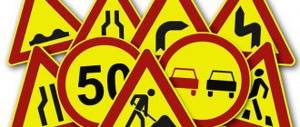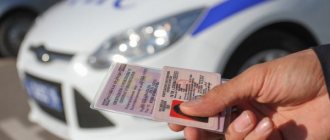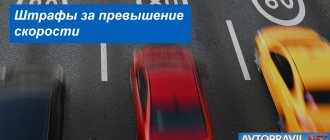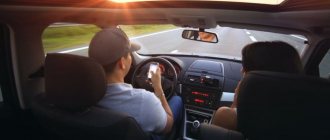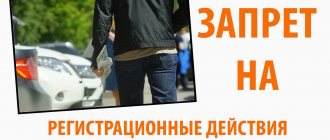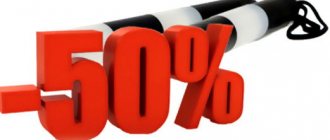Getting speeding tickets is downright frustrating, not to mention it can cost quite a penny. With paper maps largely a thing of the past, today's drivers rely on GPS services for directions and speed limits.
Tap Settings & Speedometer for Android users
Read the article for more information
Let's be real, it's much more convenient to have your own display and just see the map all the time. Having the speed limit on screen also negates the risk of “Oh, shoot! I was going 50 mph in 30! It looked like a highway! » Luckily, Google Maps offers this feature now.
Unfortunately, the speed limiting option is only available for Android users. Those who have an iPhone may have to wait a little longer for this new feature or use a different app, which we will discuss in this article.
While most GPS devices and apps offered to display the speed limit right from the start, Google Maps was late to the game. However, recently this useful feature is also available in Google Maps.
What about the speed limit?
While the feature has been widely available in the app since early 2019, speed limits are nothing new for Google. By this point in the article, you can probably guess that the journey began with an acquisition.
In 2013, Google spent nearly $1 billion to acquire Waze, a wildly popular navigation software known for its detailed road information. We'll share more about Waze for iPhone users, but the app's acquisition ultimately led to Google releasing a speedometer update for Android users.
Much to the dismay of county treasurers, the update includes speed camera icons to help you avoid speeding traps and tickets. Apart from the US, this convenient feature is also available in Mexico, Brazil, Canada, Russia and several other countries. So, if you are planning to take a road trip to Cancun, you can do it with complete peace of mind.
Traffic speed
Traffic regulations regulate in detail the speed limit for all types of vehicles. The main categories are the following parameters:
- Terrain;
- Type of vehicle – truck/passenger car;
- Presence of dangerous cargo in the car;
- Presence of people in the car – there is movement without passengers or there are people in the vehicle (especially children or groups of people).
In addition, additional road signs may regulate the maximum speed limit. You cannot ignore them and allow speeding to happen.
The rules are based on two important concepts:
- The first concept is the braking distance of vehicles . The concept is derived exclusively from physical laws. Braking distance is the distance a vehicle will travel with the brake pedal pressed. The distance is affected by speed, roadway surface, and vehicle weight.
- The second concept is stopping distance . The concept refers to the distance in meters that the car will travel until it comes to a complete stop from the moment the driver detects a dangerous situation. As you might guess, the stopping distance consists of two components - the speed of the driver’s reaction to a dangerous situation plus the braking distance itself. Many factors influence the speed of the reaction. Such factors include visibility and a relatively subjective concept - the psychophysiological state of the driver.
Read more: Room measurements for preparing a technical plan
If the roadway is poorly lit or there is fog, all this will lead to a slower driver's reaction in case of danger. In addition, the driver himself may not be concentrated (for example, due to lack of sleep), which will similarly lead to an increase in the stopping distance. Safety – personal, pedestrians, and other drivers – depends on concentration. If you approach the issue inattentively, drive with violations, or for failure to comply with traffic rules, you should prepare to pay a fine or even criminal punishment.
Based on physical laws, statistics and international practice, speed limits were developed in the traffic rules, provided for different areas and conditions.
How to enable speed limit
Turning on the speed limit on Google Maps is very simple. To get started, launch the application, select “Menu” and click “Settings” (gear icon).
In the Settings section, click on the speedometer and enable additional settings as desired. Settings include:
- Show Speed Limit – Shows the speed limit for the road you are currently on. It is located next to the speedometer.
- Show speedometer – an icon appears in the lower left corner indicating the current speed.
- Play Alert Sound - The alarm turns off when you exceed the speed limit.
- When to show the alert - you can choose whether you want the alert to be higher or at the speed limit.
Fines for driving too slowly
The Code of Administrative Offenses does not provide for a separate article containing punishment for driving at too low a speed (if there is a 4.6 sign). However, for this violation the driver may be punished under Part 1 of Article 12.16 for failure to comply with the requirements of road signs.
Read more: How to get a certificate of maternity capital balance
For too low a speed, you can receive a warning or a fine of 500 rubles .
Note. In this case, it does not matter how much the car’s speed was less than the value indicated on the sign. The fine will be the same.
Other useful features
Google Maps is a truly powerful navigation system. There are many customization options, hidden features, and geospatial search tools. Here are some that you will definitely find useful.
Offline Maps
Like most users, you probably access Google Maps on your smartphone. But what happens if there is no coverage? No problem, Google will help you.
Select a destination and tap the bottom of the screen. Click Download in the pop-up window and you can access the map (including destinations and companies) from the download section.
Shared trip
Google Maps allows you to see photo sharing options from Lyft and Uber in the app. Select your destination and click on the travel icon or public transport icon.
You're immediately shown all available vehicles in your area, including fare and time estimates, although this service may vary depending on your exact location and your internet or data connection.
Time travel
Street View's huge collection of images lets you see how streets have changed over time. Want to see what your neighborhood used to look like? Now you can. This special time machine is now available in all locations and you can access it by clicking on the stopwatch icon.
Disabled accessible routes
To find wheelchair accessible routes, tap Destinations after selecting your destination.
Then tap the public transportation icon and select Options.
From there you will be able to see the wheelchair accessible route.
This feature was first available in New York, Boston, London and several other cities around the world. However, more information is being added, so feel free to check it out. Updates keep coming, so make sure you are always using the latest version to get the latest features.
Location history
Depending on how long you've been using Google Maps, you may have received an email in January 2021 with a link to view your location history. Basically, the app can track you throughout the year and throughout your travels, and it reminds you of where you've been.
Some might think it's a cute way to remember trips or even a useful way to track your gas mileage. You can see this information in the Location History tab in the app.
Shtraf.bel - a new Internet service from the traffic police
| Vehicles | Locality | Outside the populated area | Motorway | Living sector |
| Cars | 60 | 90 | 110 | 20 |
| Passenger cars with trailer | 60 | 70 | 90 | 20 |
| Category B trucks | 60 | 90 | 110 | 20 |
| Category C trucks | 60 | 70 | 90 | 20 |
| Trucks with people in the back | 60 | 60 | 60 | 20 |
| Motorcycles | 60 | 90 | 110 | 20 |
| Intercity buses | 60 | 90 | 90 | 20 |
| Small buses | 60 | 90 | 90 | 20 |
| Other buses | 60 | 70 | 90 | 20 |
| Buses for organized transportation of children | 60 | 60 | 60 | 20 |
| When towing mechanical vehicles | 50 | 50 | 50 | 20 |
For certain populated areas, the Traffic Rules (clause 10.2, notes to 10.3) allow for the possibility of exceeding the permissible speed limit.
From 2021, the fine for speeding and a number of other types of traffic rules for some categories of motorists can be reduced by 50%. You can get a discount if your circumstances meet two important conditions: the citizen has committed a minor violation and is willing to pay the fine within the first three weeks after receiving the administrative penalty order.
What falls into the category of significant traffic violations? You will not be able to get a discount on the fine if the driver has committed one of the following violations:
- driving a car while under the influence of alcohol or drugs;
- participation in an accident where people died;
- repeated speeding by more than 40 km/h;
- refusal of medical examination;
- driving into the oncoming lane;
- driving through a red light.
Read also: How to check and pay a traffic police fine by resolution number
If you were stopped by a traffic police inspector for exceeding the speed limit by 10 km/h, which is confirmed by radar, this can safely be classified as a minor violation, therefore, having received the protocol and the penalty order, you need to make a payment in an amount half as much as the specified amount. If a person took advantage of an installment plan or deferred payment for collection, it is impossible to reduce the fine for speeding or other neglect of traffic rules. Information about whether you can or cannot pay the fine with a 50% discount is contained at the bottom of the receipt that the car owner receives. You can also clarify this information through the traffic police website.
For your information: a motorway is a type of road where the highest (within the law) speed of traffic is allowed. In numbers it looks like this:
- 50 km/h – for towing a motor vehicle;
- 60 km/h – set for trucks if there are people in the back. Also for buses with children when transporting them in an organized manner;
- 90 km/h is the norm for passenger cars with trailers, buses, and category C trucks;
- 110 km/h - the highest figure is set for motorcycles, cars, and category B trucks.
These restrictions are prescribed for roads located outside populated areas that are not classified as highways:
- 50 km/h - for towing a motor vehicle;
- 60 km/h - set for trucks if there are people in the back. Also for buses with children when transporting them in an organized manner;
- 70 km/h is the norm for passenger cars with a trailer, other buses, and category C trucks;
- 90 km/h - this speed is set for motorcycles, cars, trucks of category B, plus additionally for intercity and small buses.
Important! You should not take risks and drive on unknown routes, even at the maximum permissible speed. In such situations, the risk of encountering an unexpected obstacle is too great. Also, ignorance of the road and its poor condition further increase the possibility of an accident.
These standards are prescribed for all roads within a populated area:
- 20 km/h – this speed must be maintained when driving in a residential area;
- 50 km/h - for towing a motor vehicle
- 60 km/h – this speed is generally set for all vehicles.
As you can see, low speed is allowed for roads inside a certain populated area. This is related to safety, because on such roads there are a large number of vehicles, many pedestrians, and complex intersections at the same time. Also in cities there is limited visibility due to the many buildings and structures. With a limit of 60 km/h, the car owner has the ability to control the road and can avoid a possible collision.
Important clarification. Many drivers have misconceptions about the maximum city driving limit. Thus, car owners believe that they can drive at a speed of 80 km/h, but not 60. This fact is explained by the fact that penalties are applied only when the speed is exceeded above 80. This is absolutely incorrect. In the event of a possible accident, if one of the participants exceeded the speed, for example, up to 62 km/h, his car will be considered the culprit (if the second participant is at fault, one of the culprits). Then he will be the one who will pay for the restoration of someone else’s car.
In addition to those indicated above, there are additional restrictions in the form of special road signs. So, there is a special sign 3.24, meaning a decrease in maximum speed. If such a sign is installed, the driver is obliged to drive at the speed indicated on the sign itself.
There is another well-known sign - a limiter with a 90 km/h indicator, which is found in cities. This value is higher than the maximum permissible for urban space (60 km/h). And yet, this is not a mistake. This sign gives permission to drive in the city at a speed of 90 km/h. This sign is found on roads recognized as safe. The decision on this is made by the executive authorities of a certain subject of the Russian Federation.
What if you see a sign with a speed limit of 140 km/h? Is it possible to drive at that speed while following the sign? No, such a pointer does not make sense and is a fake. The highest permitted speed is 130 km/h (see clause 10.3 of the Rules). So be careful!
Speeding can result in more than just a fine. In some situations, a motorist may be deprived of his driver's license.
This measure of liability is used as an alternative to a fine of 5,000 rubles. The period for which a driver's license is revoked depends on the circumstances.
- For speeding by more than 60 km/h, but less than 80 km/h – deprivation of rights for a period of 4 months to six months.
- If you ignore the 80 km/h limit, the driver will lose the right to drive a vehicle for 6 months.
- Repeatedly exceeding the speed limit, if radars have detected a violation of more than 60 km/h, will result in deprivation of your license for a year.
If the car is driven by a disabled person, none of the above measures can be applied to him; the maximum penalty is a fine of 5 thousand rubles. You will subsequently need to restore your license through the traffic police department. The driver will need to not only collect documents and pay the fee, but also pass a traffic knowledge exam.
The service is very easy to use - all you need is Internet access to make a request. Requesting data to search for fines takes a few seconds. Two checking options:
- Vehicle and driver verification. The following fields are entered: car number, series and STS number, driver's license number.
- Check by resolution number. To do this, you only need the resolution number.
If the user wishes to receive notifications about the presence of fines, then they must indicate their email address when creating the request.
To provide data, you must fill in all empty fields and click on the “Find fine” button.
When a violation is recorded by cameras, a resolution is drawn up according to the state number of the car, so the fine will be assigned to the owner of the vehicle, even if another driver was driving when the camera was filmed.
The presence of unpaid fines may be an obstacle to registering a car after its sale. In this case, you can first submit a request for a data verification when considering a purchase option.
The service allows you not only to view photos of violations and check for fines, but also to make payments online. A refund is guaranteed if the decision is contested. Payment history is saved in the client’s personal account, access is available after registration. To track information, sections “My cars” and “My license/drivers” have been created. There are also tabs “Unpaid fines” and “Paid fines”, where any transaction can be found by UIN or by the violator’s last name.
Automatic devices were introduced to prevent corruption, as well as to relieve the workload of the traffic police departments of the Main Directorate of the Ministry of Internal Affairs. Photographing violations has several advantages for drivers:
- The photo allows you to see whether the car of the driver in whose name the fine was issued is recorded or not. In the latter case, it can be used as evidence to challenge the fine.
- Only penalties are applied to the violator. Such a measure as deprivation of a driver's license is excluded. According to Article 12.9. Code of Administrative Offenses of the Russian Federation, paragraph No. 5, for speeding by more than 80 kilometers per hour, a fine of 5,000 rubles or deprivation of rights for six months is provided. If a violation is recorded by an automatic device, then only a fine is provided. If, when traffic police officers record the same offense, deprivation of driving license for a period of 12 months is again provided, then in the case of a camera, only a fine of 5,000 rubles is imposed.
- Reduction of the fine in case of prompt payment. As soon as a person receives a letter from the traffic police, the period for paying a fine begins. If payment is received within 20 days after receiving the notification, then a 50% discount is provided, i.e. the violator pays half as much.
Speed limits for iPhone users
As stated above, Google Maps does not have the ability for iPhone users to view speed limits in the app. While Google Maps has a lot of features, and very accurately, if your heart is set on this feature, you should check out Waze.
Once the app is downloaded to your phone, you can set up an account with your familiar places, preferences, and more. Turn on the speedometer by following these instructions:
- Click on the "Search" option in the lower left corner of the application.
- Click on the settings icon located in the top left corner of the pop-up window.
- Scroll down to "Speedometer"
- Enable this option so it will be green
This application allows you to interact with other drivers. Whether you see debris on the road or a police officer, you and others can update this information and warn other drivers. This application is also available for Android users.
Once you set up your account, you can earn a crown by alerting other drivers and receiving waves or thanks! If you are curious about the traffic jam, you can check or add comments.
How do you know if you have unpaid speeding tickets?
In order to use this application, you must have a phone or tablet on which you can install it. This application is suitable for both Android (download) and iOS (download). The application has functions for notifying about new fines and paying directly from the application.
To view the necessary information you need to:
- Install the application and log into it.
- Enter information about your driver's license and registration certificate number.
Information about fines can also be viewed by entering the resolution number in the appropriate field in the application. Upon receipt of information about the fine, information from traffic police cameras will become available.
The traffic police fines mobile application was developed for the convenience of drivers and is a government application.
A little earlier, only traffic police officers, which is now called the traffic police, were tracking violators - they drew up a protocol at the scene of the violation and immediately issued a fine.
Times have changed: today in 2021, inspectors have received powerful technological support in the form of cameras, namely photo and video recording. They are capable of recording both photos and videos, which help identify violations while driving.
Penalties applied to drivers by traffic police inspectors are designed to normalize the situation on the roads and encourage motorists to follow driving rules. A set of rules for safe driving was published to avoid troubles and accidents, but not all motorists are happy to follow the rules of the road.
It is recommended to pay all video recording orders on time to avoid causing new problems.
The photography equipment has two cameras. The first is necessary to record the time and license plate number of the car included in the frame. The activity of the second lens is aimed at taking into account the speed of movement after the car has passed. The software reads the received information and transmits it to the database within three days.
In case of violation of traffic rules, the facts obtained are checked and a decision is made. These actions must be carried out within fifteen days. After this period, the information should appear in the database. If a desire is expressed to challenge the wording or fact of a violation, the car owner is given 10 days.
The procedure for considering the information received is regulated by Article 29.6 of the Code of Administrative Offenses of Russia. Traffic police officers are required to open a case of violation of traffic rules after recording this event.
The resolution is entered into the traffic police database, and within three they are required to send a copy of the document to the address of the car owner. In total, from the moment of traffic violation until the receipt of the corresponding notification, 18 to 20 days pass.
